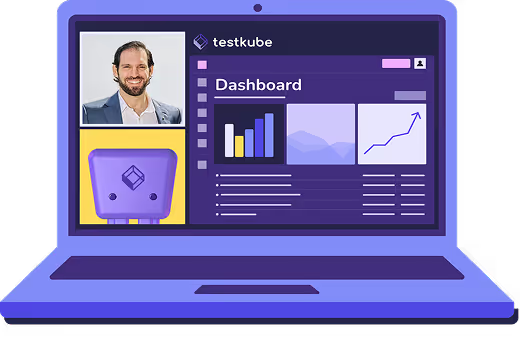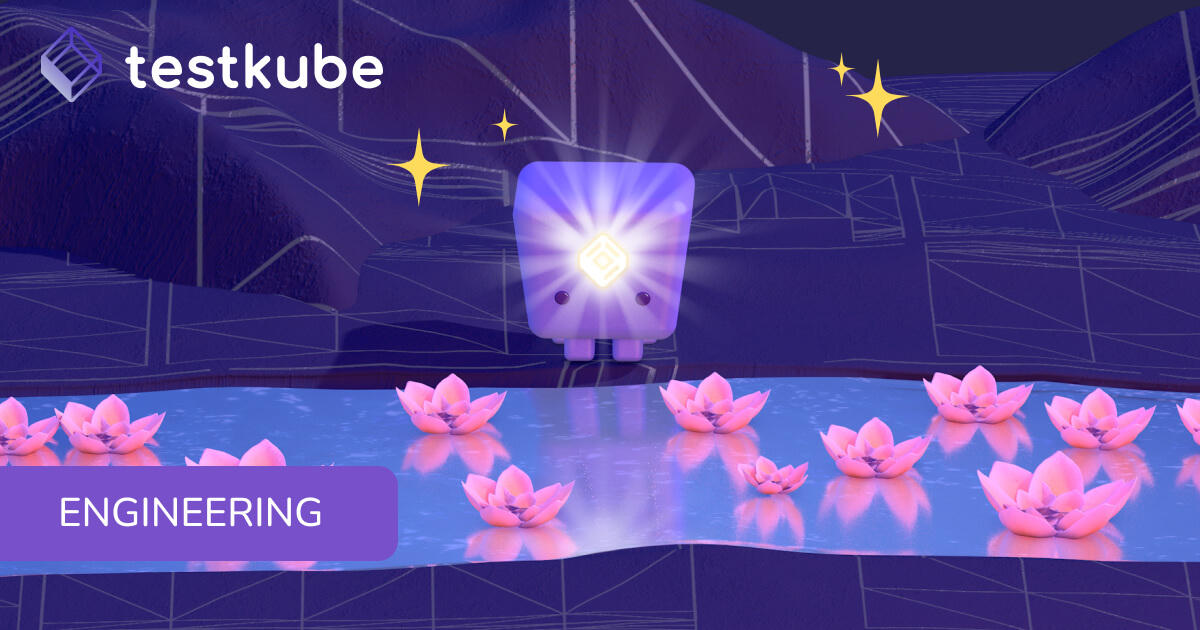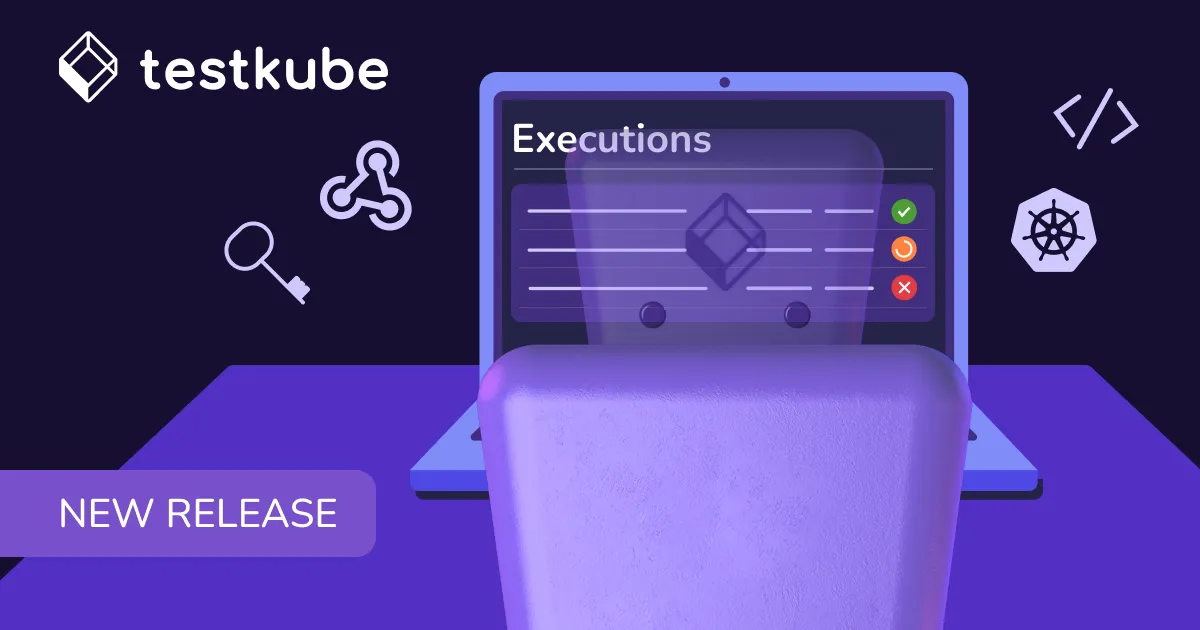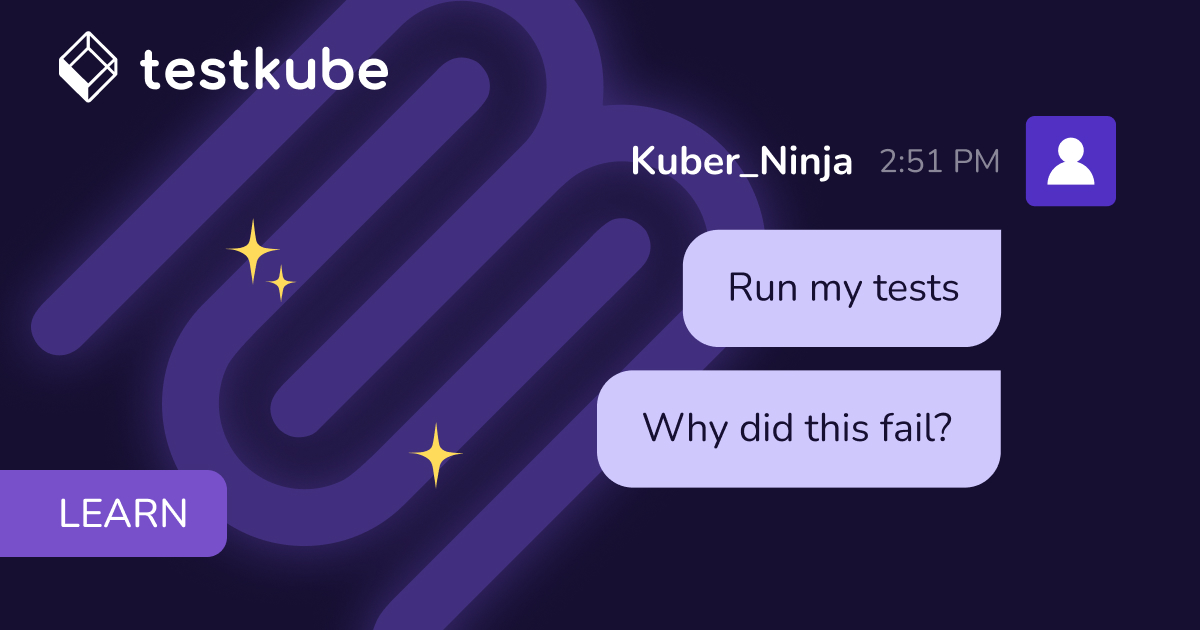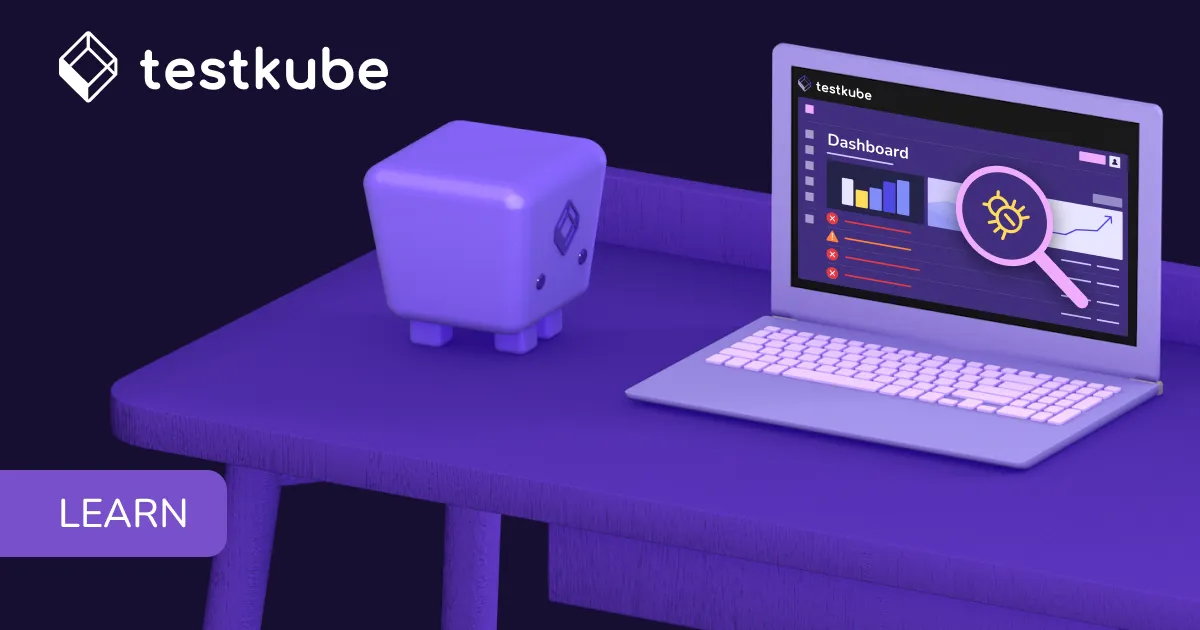

Table of Contents
Try Testkube instantly in our sandbox. No setup needed.
Try Testkube instantly in our sandbox. No setup needed.




Table of Contents
Executive Summary
AI coding tools are creating a massive shift in how fast teams ship software. Development teams using these tools are generating code at a rapid pace, some seeing a 10x increase in pull requests as AI agents accelerate development velocity. Yet most testing infrastructures remain stuck in the pre-AI era, creating dangerous bottlenecks that threaten both quality and developer experience.
We've worked with dozens of cloud-native organizations navigating this exact challenge. The teams that succeed don't just throw more compute at the problem. They fundamentally rethink how testing works in an AI-accelerated world.
This post outlines five proven strategies that leading cloud-native organizations use to scale their testing practices to match AI-accelerated development velocity while maintaining world-class quality and developer experience.
Strategy 1: Orchestrate Tests Across Your Entire Cloud-Native Stack
The Challenge
Traditional testing focuses on application functionality while ignoring the complex cloud-native infrastructure that surrounds it. Teams test their checkout flow but ignore how container provisioning, service meshes, or network policies affect functionality and performance in live deployments.
This blind spot becomes critical when AI accelerates your code velocity. You're deploying more frequently, making more infrastructure changes, and the risk of environment-related failures skyrockets.
The Solution
Implement comprehensive stack testing that covers:
- Container orchestration testing that validates Kubernetes deployments, scaling, and resource allocation
- Infrastructure-as-code testing that tests Terraform plans, Helm charts, and GitOps deployments
- Service mesh validation that ensures traffic routing, security policies, and observability work as expected
- End-to-end integration testing that validates the entire request flow from ingress to database
The key insight here is that in cloud-native environments, your infrastructure is part of your application. Testing one without the other gives you a dangerously incomplete picture of system health.
Strategy 2: Break Down Silos Between QA and Platform Teams
The Challenge
Development velocity increases exponentially with AI, but organizational silos create friction that cancels out these gains. QA teams lack visibility into application and infrastructure changes while platform teams don't understand application testing requirements, leading to delayed deployments and production issues.
When you're generating 10x more pull requests, these communication gaps become 10x more expensive. The traditional "throw it over the wall" approach between teams simply doesn't scale.
The Solution
Create integrated testing workflows that span organizational boundaries:
- Collaborative test automation where QA teams write application tests while platform teams contribute infrastructure and chaos testing
- Shared testing infrastructure where platform teams provide self-service testing environments that QA teams can provision on-demand
- Cross-functional test design that includes platform engineers in test planning to identify infrastructure failure scenarios
- Unified observability that shares metrics and logs across teams so everyone can see the full picture of system health
The goal is to create a culture where testing is a shared responsibility, not a gatekeeping function. When platform engineers understand testing requirements and QA engineers understand infrastructure constraints, you eliminate entire categories of preventable failures.
Strategy 3: Implement AI-Scale CI/CD Pipeline Architecture
The Challenge
Legacy CI/CD systems designed for 5 pull requests per day collapse under AI-generated workloads of 50-100+ pull requests daily. Queued builds, resource contention, and serial test execution become major velocity killers.
You've invested in AI tools to move faster, but now your CI/CD pipeline has become the bottleneck. Developers are waiting hours for test results, and the backlog keeps growing.
The Solution
Architect your pipeline for AI-scale throughput:
- Parallel test execution that runs tests concurrently across multiple clusters and namespaces
- Intelligent test selection that uses code analysis to run only tests affected by changes
- Resource auto-scaling that dynamically provisions compute resources based on testing demand
- Distributed testing that spreads test workloads across multiple cloud regions or clusters
- Progressive test strategies that run fast smoke tests first, then trigger comprehensive tests in parallel
Modern CI/CD isn't about running all tests in sequence, it's about intelligently orchestrating test execution to maximize feedback speed while minimizing resource waste.
Strategy 4: Reduce Noise and Eliminate Flaky Tests Through Better Observability
The Challenge
Higher code velocity means more test failures, but many are false positives from flaky tests or environmental issues. Teams waste time investigating phantom problems while real issues slip through.
When you're running 10x more tests, even a 5% flaky test rate becomes unmanageable. Your team drowns in noise, loses trust in the test suite, and eventually starts ignoring failures altogether, a recipe for production disasters.
The Solution
Implement observability-driven testing practices:
- Test execution tracing that captures detailed telemetry about test runs to identify environmental vs. code issues
- Historical trend analysis that tracks test reliability over time to identify patterns and flaky tests
- Real-time failure analysis that automatically categorizes failures by type (application bug, infrastructure issue, test flakiness)
- Proactive alerting that sets up intelligent alerts distinguishing between systemic issues and one-off failures
- Test environment health monitoring that monitors the health of testing infrastructure to prevent environmental false positives
Think of observability not just for your production systems, but for your testing infrastructure itself. When tests fail, you need to know why immediately: is it a real bug, a flaky test, or an infrastructure hiccup?
Strategy 5: Optimize Developer Experience at Critical Friction Points
The Challenge
AI tools promise faster development, but poor testing experiences can negate these gains. Long feedback loops, difficult debugging, and complex test setups frustrate developers and slow velocity.
We've seen teams where developers spend more time fighting with test infrastructure than actually writing code. The AI helps them generate a feature in 30 minutes, but it takes 3 hours to get test results and debug failures. That's not progress.
The Solution
Focus on developer experience optimization:
- Sub-5-minute feedback loops that ensure critical tests complete within 5 minutes of code commit
- Self-service test environments where developers can spin up isolated testing environments with a single command
- Intelligent test failure reporting that provides actionable error messages with suggested fixes and relevant logs
- Local testing capability that enables developers to run production-like tests on their local machines
- Visual test debugging that offers easy-to-use tools for investigating test failures and analyzing system behavior
Remember: every friction point in your testing workflow gets amplified by increased velocity. Small annoyances become major blockers when they happen 10x more frequently.
Here's What It Comes Down To
AI-driven development requires a reimagining of how we approach testing to ensure that increased development velocity isn't stuck in delivery pipelines. Teams that treat testing as an afterthought will find themselves bottlenecked by quality issues, while those that scale testing infrastructure alongside development velocity will achieve the full promise of AI-assisted development.
The five strategies outlined here represent proven approaches from cloud-native organizations that have successfully navigated this transition. The key is starting with your biggest bottleneck, whether that's pipeline capacity, organizational silos, or developer experience, and systematically addressing each challenge.
Success requires both technical and organizational changes, but the payoff is substantial: higher deployment frequency, reduced time to market, and developer teams that can focus on innovation rather than fighting with testing infrastructure.
The AI revolution in software development is here. The question isn't whether your team will adopt these tools, it's whether your testing infrastructure will be ready when you do.
Ready to Scale Your Testing for AI-Powered Velocity?
Testkube's Kubernetes-native testing infrastructure is purpose-built to help teams manage increased code throughput and testing demands. Our platform gives you the orchestration, observability, and developer experience you need to test at AI scale without sacrificing quality.
Book a demo to see how leading cloud-native teams are using Testkube to unlock the full potential of AI-accelerated development.
Frequently Asked Questions (FAQs)


About Testkube
Testkube is a cloud-native continuous testing platform for Kubernetes. It runs tests directly in your clusters, works with any CI/CD system, and supports every testing tool your team uses. By removing CI/CD bottlenecks, Testkube helps teams ship faster with confidence.
Explore the sandbox to see Testkube in action.


